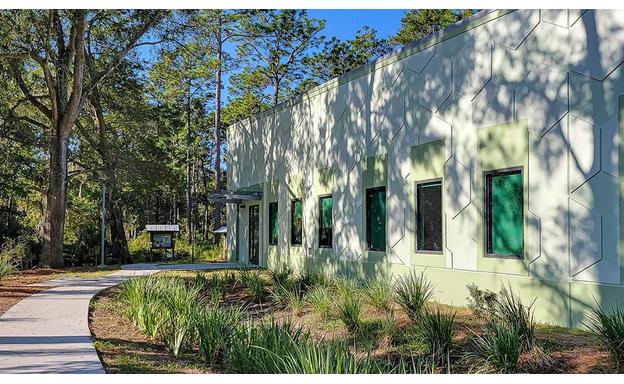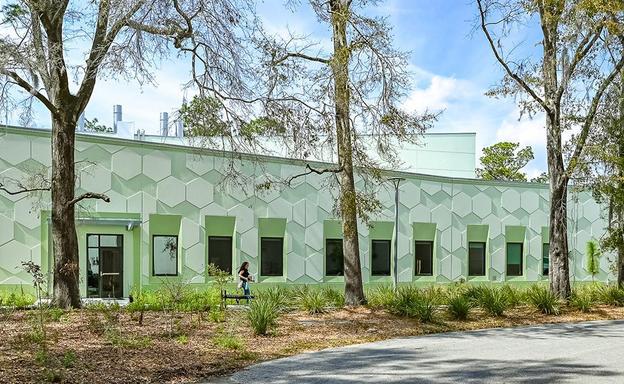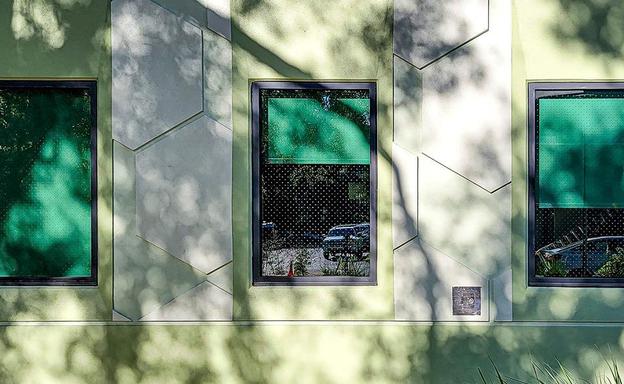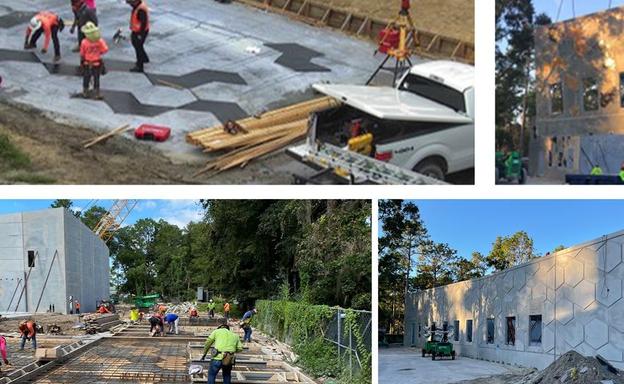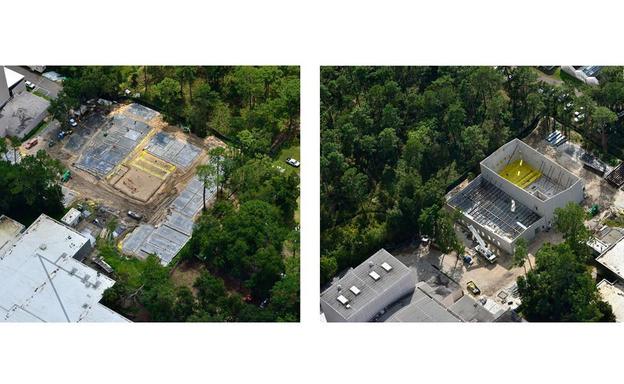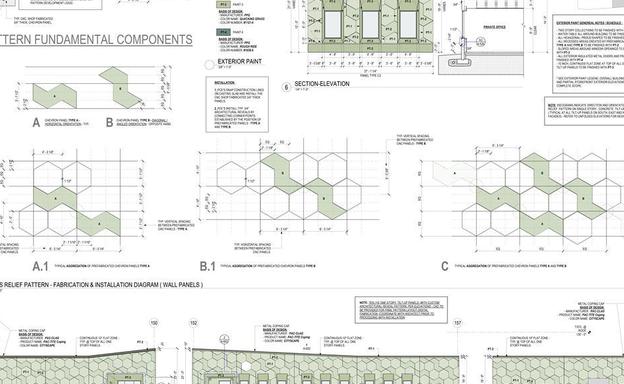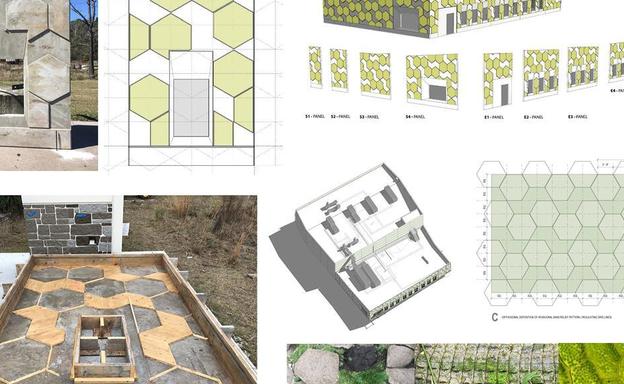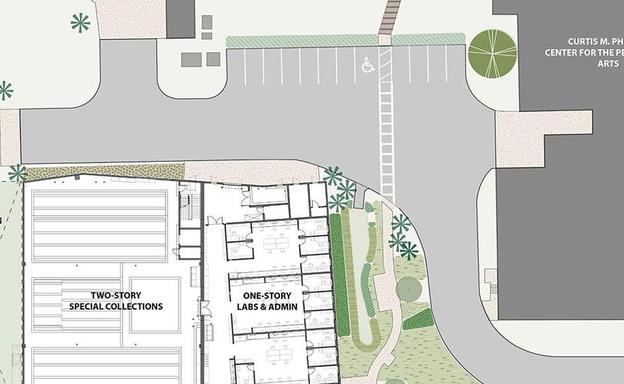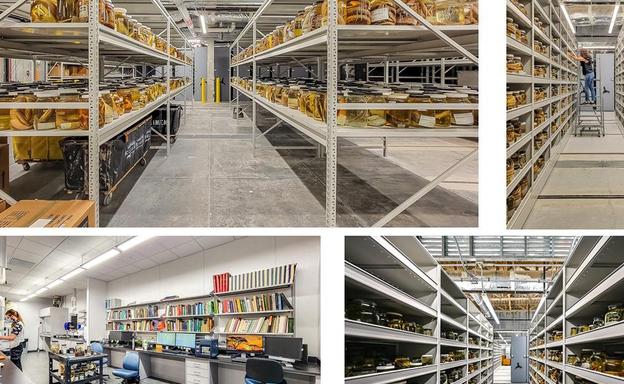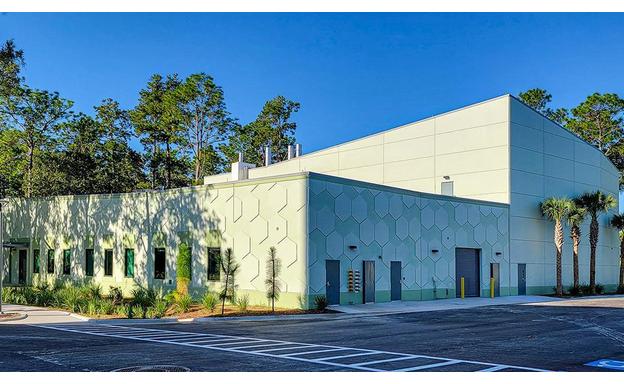Florida Museum of Natural History Special Collections Building
Summarize the project's program, features, and achievements: The Florida Museum of Natural History’s Special Collections at the University of Florida posed a major safety hazard to staff, students and the outdated on-campus building in which it was located. The collection of fluid-preserve specimens in jars of alcohol created a potential detonation hazard if specimens were improperly handled or accidentally ignited. The outdated building had inadequate prevention characteristics and protections for these hazards in case of an accident. In collaboration with the Office of Environmental, Health and safety, The University of Florida worked with the integrated design build delivery team to design and construct a new facility to quickly overcome this challenge. The two most important goals for the project were to provide an advanced fire protection system to prevent a catastrophic alcohol explosion and provide a state-of-the-art research facility for university staff and students. The building consists of a two-story, highly technical, fire-resistant storage area that is connected to an innovative one-story research facility. The two-story special collections area is separated from the labs and administration offices by a three-hour rated tilt-up wall, designed to shield the offices and labs from collections storage in the unlikely event of an explosion from the stored specimens. The two-story portion houses the stored specimens, and its exterior is a simple pattern of reveals in the tilt-up panels. The one-story portion of the building is where the research is done, and this area brings new discoveries to light and provides greater understanding of the collections, which is highlighted by the highly detailed exterior tilt-up panels. Originally, this project was viewed by the University as a ‘back of the house’ facility, without need of any significant form of design expression. The University was, understandably, mainly concerned with managing the hazards and providing excellent research facilities. The design team was able to add ‘poetry’ into the design, utilizing tilt-up as the means. Inspiration for the exterior design was taken from the “Library of Life” collection of preserved specimens in the special collections and the adjacent Natural Area Teaching Laboratory. Alligator skin patterns and plant cell structures share a recognizable “hexagonal” organization, a pattern language, that was adapted to create the expressive main facade. Interestingly, a professor utilizing the building noted that the building ‘skin’ looked like fish scales, while others say it looks like the bony plates of alligator skin. This is the more common response, since the Special Collections facility is housed at University of Florida, home of the Florida Gators!
What obstacles were overcome related to the schedule, budget, program, specification, site, etc. on this project? There were many technical components and challenges that were overcome. Tilt-Up was not only utilized to separate areas from each other within the facility, but also protected the large adjacent preservation area from building contents in case of a fire. The site was tight to minimize the disturbance adjacent to the preservation area. Additionally, the preservation area, used as an outdoor teaching lab, occasionally requires controlled burns. The tilt-up concrete envelope helps maximize protection of the building contents during this process. Perhaps the biggest challenge overcome was winning over the university staff who were against building the facility, due to its adjacency to the preservation area. The design is simultaneously deferential to the area and engages with it, in such a positive manner that those who were poised to be against the project and fight it being built actually applauded when they saw it presented due to the design’s sensitivity to its surroundings! An earlier version had some of the mandated campus red brick incorporated into the design, but fortunately, the university allowed the building to go forward without brick since it was located outside the campus core, another challenge overcome. In addition to the issues related to Covid most projects suffered, there was limited budget for architectural aesthetic treatment, since it was a 'back of the house facility'. This necessitated a clever response to create the desired effect with (relatively) minimal expense, found in the patternmaking of the exterior panels.
Please communicate any engineering complexities or unique features of the panel design for this project. ? The team worked together early in the design process to define how to construct the custom relief pattern. As proof of concept, the team mocked-up a typical panel to evaluate constructability and other technical detailing issues in support of the design intent. This allowed for further refinement to the design details and optimize the textured pattern for constructability, including pattern matching at in-line panel joints and at mitered corners. Due to the facility’s unique function and associated hazards, the project was under intensity scrutiny and passed numerous on-site inspections, including Indoor Air Quality and Florida Water Star certifications. The project was also awarded the “Certified Florida Green Commercial Building Platinum,” which is the highest level of sustainable building certification through Florida Green Building Coalition, a first at the University of Florida.
What is the potential for this project's impact on the community and/or environment? The creative integration of patterning into the tilt-up panels celebrates the work being done at the Special Collections Building. The life safety benefits of deploying tilt-up and the supporting engineering systems create a facility where critical research and storage facilities for this 'catalogue of life' may continue for decades to come. And finally, a notable tilt-up achievement of the project goes beyond the particulars of the tilt-up work itself: the fact that the Special Collections Building was the first tilt-up project ever constructed on the University of Florida campus.
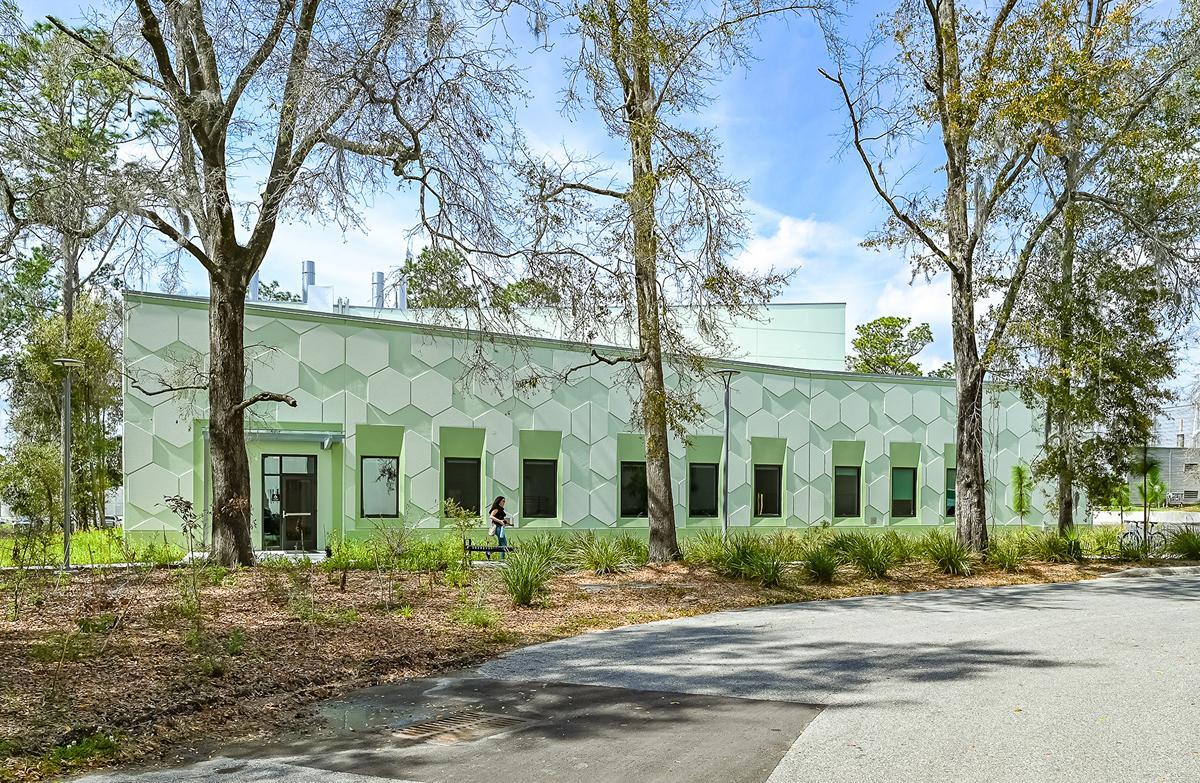
Project Location
Gainsville, FL 32611
United States
Project Images
Project Team (TCA Members)
- General Contractor:
- Concrete Contractor:
- Architect:
- The Haskell Company
- Engineer:
- Suppliers:
- Photographer(s):
- Glenn Hettinger
Project Specifics
- Project Category:
- Research
- Building Types:
- College & University
- Finishes:
- Paint (Flat)
- Features:
- Angled Panels (Elevation-Edge/Shape)
- Formliner
- Reveals
- Insulation:
- Uninsulated
- Environmental:
- Number of Floors:
- 2
- Tilt-Up Wall Area:
- 23,480 sq ft (2,181 sq m)
- Total Floor Area:
- 23,500 sq ft (2,183 sq m)
- Project Footprint:
- 16,800 sq ft (1,561 sq m)
- Tallest Panel:
- 43 ft 9 in (13.34 m)
- Widest Panel:
- 28 ft 11 in (8.81 m)
- Largest Panel:
- 820 sq ft (76.2 sq m)
- Heaviest Panel:
- 74,300 lbs (33,702 kg)
